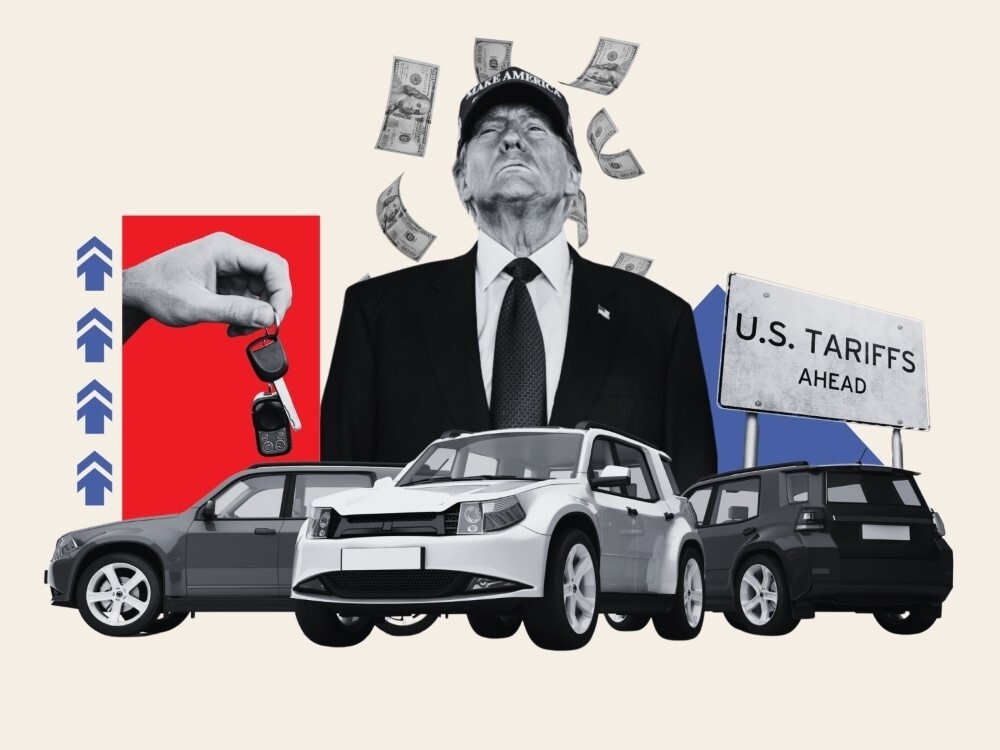

On May 5, 2025, Ford Motor Company suspended its annual guidance for stakeholders due to the rising uncertainty created by Trump's tariffs. As per the authorities, the current tariffs would levy the company with a loss of nearly USD 1.5 billion in adjusted earnings before interest and tax. Is it the beginning of the automobile industry's decline or rise?

Image source: Yallamotor.com
After the closure of the US stock trading sessions, the company's share was deemed to fall about 2.3 per cent in the after-hours trading session. In addition to this, the imposed tariff by Trump is determined to increase the overall cost for the year by more than USD 2.5 billion. The majority of the cost would be incurred while importing the automobiles from countries like China and Mexico. As of now, the company has stopped its exports to China, except for importing vehicles like the Lincoln Nautilus.
Ford has reported numerous strategies and actions, and the company has been able to make about USD 1 billion. One of the key strategies behind it was to discontinue transporting vehicles from Mexico to Canada by using bonded carriers, eliminating the need to incur tariffs.
Reality is far from strategy: Ford's take on Trump's tariff 3 months ago
As expressed by the CEO of Ford, the imposed tariffs would ease the impact on the automakers, suppliers and consumers. However, he also states that it is crucial to work closely with the administration for the imposed tariffs for the envisioned growth within the industry.
Moreover, he also marks the tariffs to be "essential" to encourage higher export rates for the US. Not only this, he further adds that this shall create domestic job opportunities and incur affordable parts, ensuring the effective promotion of domestic growth and affordable vehicles within the country.
With this, the company's course of action includes increasing nearly 4 million vehicles each year, 15 additional manufacturing plants and a total of 500,000 manufacturing jobs.
Back in 2024, when the company faced a loss of USD 5 billion, they had planned to increase their global volume which would be driven by the year-long impact of European launches. They further also planned to increase their investment in their battery facilities and next-generation products in the next two years. However, the reality is actually far from the reality.
Offsetting cost impact
With the final tariffs imposed on May 3, Ford's earnings per share shall witness a decline of nearly 14 per cent in the first quarter itself. This amount will surpass the London Stock Exchange Group of Companies (LSEG) analyst's estimate of 2 per cent.
In the first quarter of 2025, the company's net income dropped to USD 471 million. If compared with the previous year, the company had incurred an income of USD 1.3 billion, indicating a fall of approximately 63.85 per cent.
The company's revenue fell by 5 per cent to USD 40.7 billion in the same quarter. However, it is below the expected fall of USD 36 billion. This had been recovered with robust earnings as consumers wanted to buy cars before the overall price rises.
Additionally, Trump's tariffs of 25 per cent on foreign auto imports are likely to impact the company more than its rival because 80 per cent of vehicles are built within the domestic boundary, but, will add pressure affecting its long-term growth rate.
Keeping the going tariff imposition, Ford Motors expects the year-long earnings before interest and tax would be lower by USD 1.5 billion.
Tariff’s impact so far on the automobile industry
As of May 3, 2025, all of Trump's tariffs on foreign-made auto parts had begun by providing the automakers with concessions from the administration. Late last week, Trump signed an executive order highlighting the new rules to be applied for the automotive sectors, providing a blanket of 25 per cent tariffs on auto parts.
With the rising concerns of the increased imposed tariff rates, Trump has freed the industry by preventing parts tariffs from piling up on top, which is also known to be "destacking". This gives an edge to those automakers who import steel for body panels and would not have to pay the 25 per cent tariffs on the foreign parts and the additional 25 per cent duty on the value of the steel. However, the scenario changes for the companies heavily relied on aluminium for the manufacturing process.
According to the new rule drafted, the automakers shall be reimbursed for tariffs incurred on the foreign-made auto parts, which sums up to be 3.75 per cent of the US-made car for a year. This creates an offset, according to the Commerce Department for the automaker's tariff bill while importing the auto parts.
Trump has imposed a total of 25 per cent tariff on aluminium imports, the main victim has been Ford, as it directly impacts the manufacturing operations and cost. This is because, as the company is committed to providing lightweight cars, aluminium is the ideal choice, but the main concern is that the country produces less of it domestically.
Moreover, the majority of the high-quality aluminium used by the company in the vehicle's outer body structure is all imported. For this, the company is highly reliant on Canada's smelters, further threatening to decimate the bottom lines of the carmakers as well as the parts suppliers. This shall also be added to the overall cost of the car quoted to the consumers.
Responses








